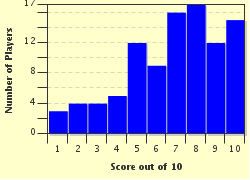Quiz Answer Key and Fun Facts
1. This feature was used by the Greeks to support the abacus and architrave (parts of a large slab) without the use of a wall. There are several types, and it can be free standing. What is the feature called?
2. A crown joins with the abacus and helps to distribute the weight at the top of the temple. Some crowns are more decorative, while others are more plain. What is the crown called?
3. The scrolls on top of this pillar represent the Ionian classical Greek Architectural Order. What is another name for the scrolls?
4. The structure lying horizontally above the pillars is the entablature, which includes a decorative feature called a cornice. The cornice also has a practical function akin to the gargoyle on Gothic architecture. What does the cornice help collect?
5. The structure which lies horizontally above the pillars is the entablature, which consists in part of an area that may be decorated with relief sculpture. What is this area called?
6. An ornament that is placed at the apex of the pediment in the classical style is called a(n)?
7. Also called a plinth, this is a flat base that supports a pillar. What is it called?
8. A caryatid is a sculpted female statue used to support an entablature. What is the name, derived from a Greek god of great strength, for a sculpted male statue used for the same purpose?
9. The Parthenon of Athens is probably the most famous of this style of Greek architecture, where there is a double row of columns on all sides. What is it called?
10. What is the name for a Greek circular temple? One of the most famous examples of this type of structure is at Delphi.
Source: Author
ponycargirl
This quiz was reviewed by FunTrivia editor
looney_tunes before going online.
Any errors found in FunTrivia content are routinely corrected through our feedback system.

